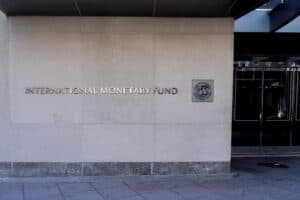Although a 25 basis points cut in the repo rate does not sound like a big difference, cash strapped consumers will take any extra money they can get.

The Reserve Bank is keen to keep inflation at 3%, but consumers wonder whether this target will mean fewer cuts to the repo rate.
Recent events suggest there is scope for rate cuts before the end of the year, even as monetary authorities push for a lower inflation target, Jee-A van der Linde, senior economist at Oxford Economics Africa, says.
“South Africa’s grey list exit provided an added boost to sentiment, while the US cut interest rates by a further 25 basis points. However, the magnitude of the cuts remains limited, and the timing is uncertain.”
ALSO READ: Inflation increase means hope for another repo rate cut is fading
Inflation, oil price and rand also play role in decision to cut repo rate
He points out that inflation increased only mildly to 3.4% in September. “We see limited upside risk, with the headline rate forecast to peak at around 4.1% by mid-2026. Therefore, the overall inflation outlook remains benign, underpinned by a stronger rand and favourable international oil prices.
“Declining inflation expectations following the decision of the South African Reserve Bank (Sarb) to target 3% inflation further support our forecast that inflation will average 4.0% over the next two years before easing to 3.8% in 2028.”
Van der Linde says Oxford Economics Africa does not believe the Sarb will reach its target by 2027 and beyond. “Even so, in our view, markets will be content with lower-trending inflation and are unlikely to dwell on the target overshoot.”
He says improved sentiment has seen domestic assets rally this year, aided by a weaker US dollar, favourable terms of trade and the Sarb’s push for a lower inflation target. “In addition, South Africa’s greylist exit provides a welcome boost to sentiment, improving risk perceptions and helping to reduce the country’s elevated risk premium, one of the key factors preventing the Sarb from lowering interest rates further.
“We therefore believe there is scope to cut the repo rate by around 50 basis points over the next 12 months.”
ALSO READ: Repo rate unchanged as economists expected
Will Reserve Bank follow US Fed in cutting repo rate?
After the US Fed lowered interest rates by 25 basis points on Wednesday, they see increased odds of the Sarb incrementally lowering rates in November, Van der Linde says. “However, hawkish dissent and Fed Chair Jerome Powell’s comments suggest that future moves could become more contentious.
“The US Fed will likely remain on hold until next March and deliver just three 25 basis points cuts in 2026. The Sarb’s inflation transition considerations aside, a hawkish Fed policy path limits South Africa’s policy easing to possibly just one 25-basis point cut in the fourth quarter of 2026.”
He also points out that South Africa’s real interest rate differential with the US has narrowed notably over the course of this year and is hovering close to the long-term average of roughly two percentage points.
ALSO READ: Repo rate cut no help for consumers on brink of financial disaster
Repo rate cuts depend on how Reserve Bank approaches transition to 3% inflation target
Van der Linde says much will ultimately depend on how the Sarb approaches the transition to the inflation target. “Rhetoric from monetary authorities suggests the central bank is determined to bring inflation down to 3%.
“Consequently, we assume some sacrifice to economic growth in the form of elevated interest rates through most of 2026 and the subsequent two years. However, this impact is limited compared to the existing economic insufficiencies, which can only be addressed through effective structural reforms. Our analysis shows that success on the inflation front could allow the repo rate to drop to 5.0% over the medium term.”
ALSO READ: Reserve Bank cuts repo rate despite US Fed decision
What does the US Fed’s cut mean for South Africa’s repo rate?
Maarten Ackerman, chief economist at Citadel, says it was expected that the US Fed would cut rates on Wednesday night by another 25 basis points. “It is clear that the US Fed must make a decision about the weakening job market and weigh that up against sticky and potentially high inflation.
Therefore, at this point in time, it seems like they are more comfortable dealing with some inflationary pressure but would definitely want to address the deterioration they see in the job market.”
What does that mean, if anything, for our own monetary policy and the decisions going forward? “I think it is clear that our governor is very much focused on keeping inflation contained, and with the proposal to drop our inflation target to a single, lower number, it is unlikely that this will influence his decision in terms of our interest rate policy going forward,” Ackerman says.
“Also, if we think about previous US cuts, our governor and monetary policy committee did not act in line with the US. They continue to follow their own approach at this point in time. However, we expect that there are more rate cuts ahead in the South African cycle, and it is likely that we might see another cut before the end of this year.”






